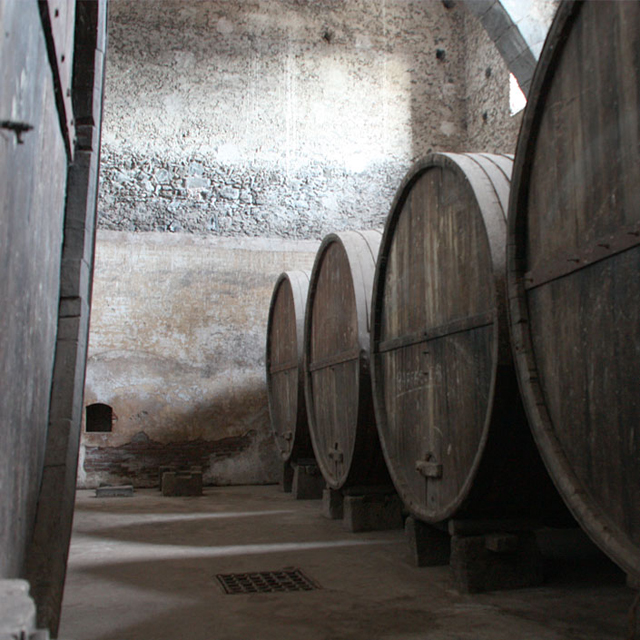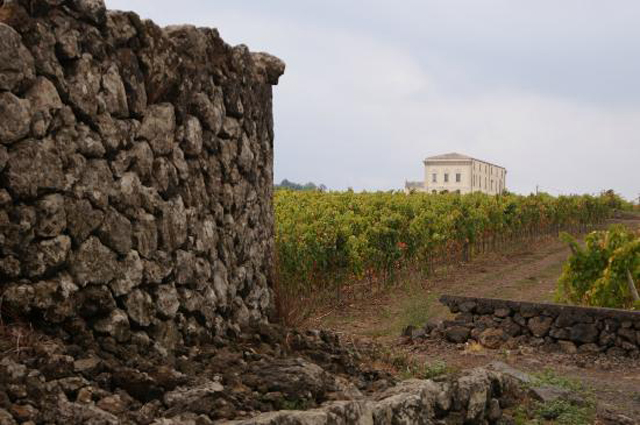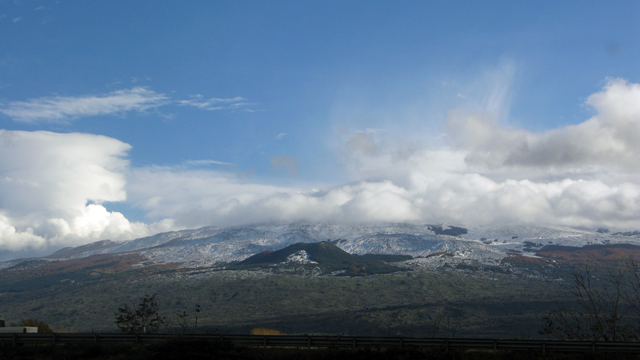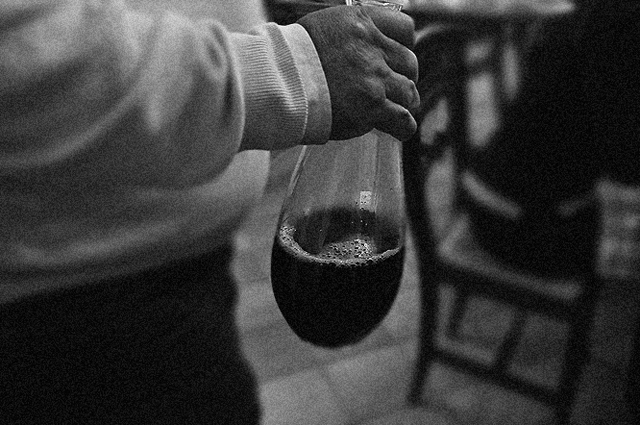 Image: Feudo Vagliasindi
Image: Feudo Vagliasindi
“I’m Paolo, by the way,” says the angular man in the trendy, thick-framed glasses standing in front of me. “Like my father, and his father and – oh, pretty much all of the men in my family.”
We’re in the disused cantina of Feudo Vagliasindi, an elegant agriturismo in the countryside up on Etna, which was built in 1860 by the present Paolo’s great-grandfather. In those days, however, it was a functional, one-storey building, built for the sole purpose of processing the vineyard’s grapes into wine. In 1920 it was extended to include a first floor living area, a porch and a terrace with views up to Etna’s summit, but its primary reason for being was still wine production. That is, up until the war, when people had more pressing things on their minds than tending to grapevines. When General Patton then arrived with a load of troops and seconded the building to house them, it seemed as if the Vagliasindi’s days as wine producers were over.
Fast-forward fifty-odd years, to when the present-day Paolo and his brother have the bright idea of setting up an agriturismo. Olive production starts in 1999, and in 2002 the vines are replanted. This leads to the farm’s first grape harvest in 2009 – and boom! the Vagliasindis are very much back in the wine trade.
Image: MichaelBianco
It’s a classy setup, Feudo Vagliasindi, with understated brown cloths on the tables, and contemporary art on the walls. Outside the window, however, the olive trees and vines which produce the wine and oil that go so well with the modern Sicilian food produced in the restaurant are no more than a hundred yards from the building. This place has roots, in every sense of the word.
The day that we arrive we’re the only people in the restaurant. Admittedly we’re late for lunch, having spent a morning galumphing across the mountainside and rocking up at the restaurant with only minutes to spare before the kitchen stops taking orders, but it seems strange, given the quality of the food that they’re producing. The man who we will later discover is called Paolo explains as he uncorks a bottle of wine for us to try. “Yesterday we had a clear view from the terrace of the crater erupting. A bit unsettling, though – we could feel the place shaking.” It’s been a while since she did any damage to human settlements, but at the moment she’s just … reminding everyone that she *could*. If she so wanted.
* * * * *
Image: Kate Bailward
“That was your job, by the way,” says Paolo, deadpan. He twitches an eyebrow at me. “Sorry …” A couple of hours have passed, we’ve eaten our fill of the excellent food in the restaurant, and we are now taking a tour of the palmento (press) and cantina (store) where – once upon a time – the Vaglisindis produced their wine. Paolo’s describing how, in the early days, it was the women who hauled baskets of grapes up the outside steps and poured them through the windows into the press, ready to have the first lot of juice stomped out of them. “See these channels here?” He points at the grooves running around the perimeter of the stone floor on which we’re standing. “The grape juice ran through those, and the must was pushed down over this ledge to be crushed further.” He beckons to us to follow him. “Mind your step.”
He walks, sure-footed, along the top of the narrow wall which bounds the next press, heading for a steep set of stone steps which will take us down to ground level. There’s a drop of six or eight foot to the left of us, and the wine at lunch has made me giddy. Not that I want the serious-faced man in the severe glasses descending the stairs ahead of me to know that. Che brutta figura! I make my way with exaggerated care down the stone steps, one deliberate footstep after another. Paolo watches us descend, saying nothing. He knows. I’m sure he knows. I decide I don’t care; he makes good wine.
Image: Alfonso Cevola
“See this?” When we’re back on level ground, Paolo indicates an enormous wooden screw which runs from floor to ceiling. “It took eight men to turn it, using those levers.” He gestures as he speaks, bringing to life the effort required. I stare at the giant piece of wood with its spiralled edges. It’s a good metre round and run through with stout wooden poles, which were used to heave it into motion. Four men to each pole – two each side of the screw – working like donkeys to crush however many tonnes of grapes – I’m too overawed and tipsy to listen to specifics – into wine. It’s amazing.
The screw itself is attached to a huge wooden beam which would be levered down further and further with each turn made. At the other end of the beam there’s a millstone which would put increasing pressure onto the semi-crushed grapes, releasing yet more juice. Paolo nods towards the channels grooved into this lower floor, the same as the upper one. “The juice ran through those and down to the barrels. Follow me.” We obey, and he leads us into a great cave of a room, containing barrels at least twice my height. “We don’t use these any more – the wine pressing is done elsewhere. But they’re just as they were in the days of my great-grandfather.” I lean on the railings at the top of the steps and breathe in the atmosphere of the place. As cold and unused as it is at the moment, there’s still a feeling of life here. The wood of the barrels and of the cantina’s fittings has the warm patina of eighty-odd years of previous use, and it’s easy to imagine the noise of the wooden lever being cranked by men straining against its weight, as women unloaded basket after basket of grapes to be stomped down on the mezzanine above.
My head spins wine-pleasantly. I come back to earth; to Davide telling Paolo about my visit to the museum of archaeology in Randazzo, founded by a certain Baron Paolo Vagliasindi. “Oh yes. He was a relative,” says Paolo. “We’re all called Paolo in my family …









